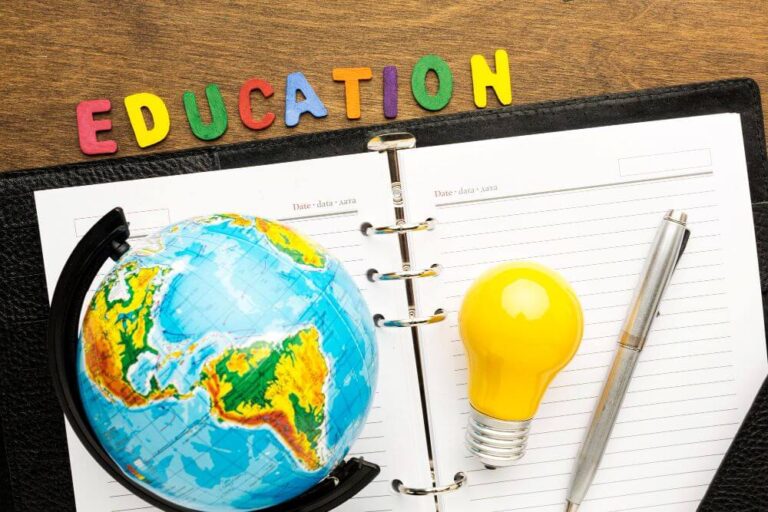The educational sector is undergoing profound changes, reshaping how students learn, how educators teach, and how institutions operate. Advances in technology, shifting priorities, and evolving expectations are driving a transformation that extends beyond the classroom. Traditional methods of instruction and assessment are being reevaluated as new tools and approaches gain traction. Digital learning platforms, artificial intelligence, and hybrid models are influencing not only access to education but also the skills students need to succeed in an increasingly complex world. At the same time, institutions are placing greater emphasis on areas such as career readiness, mental health, and sustainability. These shifts reflect a broader effort to create an education system that is more inclusive, adaptable, and aligned with the needs of a rapidly changing society.
The Expansion of Online Learning
The shift toward digital education has transformed how students and educators interact with learning materials. Virtual classrooms, digital collaboration tools, and interactive content have expanded access to knowledge beyond traditional settings. Institutions are adopting platforms that streamline software access, making resources available anytime and anywhere. Services like AppsAnywhere contribute to this transformation by simplifying how students engage with academic applications, removing barriers that once limited accessibility. With a focus on convenience and flexibility, this model continues to shape the future of education.
The Growing Role of Artificial Intelligence
The introduction of artificial intelligence into education is reshaping both teaching methods and administrative processes. AI-driven tutoring systems analyze student performance, providing targeted support where needed. Automated grading tools reduce the workload for educators, allowing them to dedicate more time to instruction. Predictive analytics help institutions identify students who may require extra support, allowing for early interventions. The influence of AI extends beyond the classroom, optimizing admissions, scheduling, and resource allocation. As these technologies continue to evolve, their presence in education will only expand.
The Evolution of Assessment Methods
The way students are evaluated is undergoing a major transformation, moving away from traditional exams and standardized tests toward more comprehensive and dynamic methods. Educational institutions are exploring alternative approaches that better reflect a student’s ability to apply knowledge in real-world scenarios. Project-based learning has gained traction, allowing students to demonstrate their understanding through hands-on tasks and long-term assignments rather than relying solely on timed exams. Open-book assessments are becoming more widely accepted, encouraging students to focus on problem-solving, critical thinking, and the application of concepts rather than rote memorization.
Digital portfolios are also emerging as a key tool for assessment, providing a more detailed picture of a student’s progress over time. These portfolios compile essays, research projects, presentations, and other work, offering a broader perspective on a student’s learning journey. Rather than a single test score defining their academic ability, students can showcase a collection of work that highlights their strengths and growth. This shift benefits both students and educators as it encourages continuous learning and deeper engagement with the material.
The Demand for Digital Literacy
As technology becomes more ingrained in education, digital literacy is emerging as a fundamental skill that extends beyond basic computer knowledge. Students must learn to navigate online resources effectively, critically evaluate information for credibility, and engage responsibly with digital tools. With an overwhelming amount of data available at their fingertips, understanding how to differentiate between reliable sources and misinformation is a skill that carries weight both in academia and daily life.
Cybersecurity awareness is becoming just as significant as traditional study skills. Students are expected to understand the importance of safeguarding personal information, recognizing phishing attempts, and practicing responsible online behavior. As cyber threats become more sophisticated, educational institutions are integrating lessons on digital safety and ethics into their curricula to prepare students for an increasingly connected world. Discussions around data privacy, digital footprints, and the ethical implications of artificial intelligence are becoming part of classroom conversations.
The Rise of Hybrid Learning Models
The blending of in-person and online instruction is redefining traditional learning environments, offering students greater flexibility while maintaining the benefits of face-to-face interactions. Hybrid learning models combine classroom experiences with digital resources, allowing students to access lectures, assignments, and discussions from anywhere. This approach is particularly beneficial for those who balance education with work, family responsibilities, or other commitments.
Institutions are investing in new technologies to support this shift, integrating live-streamed lectures, interactive discussion boards, and virtual collaboration tools into their curricula. Digital whiteboards, real-time polling, and AI-driven engagement tools are helping educators bridge the gap between physical and virtual classrooms. Schools and universities are redesigning learning spaces, equipping them with smart technology to facilitate seamless transitions between in-person and remote learning.
The Shift in Institutional Priorities
Educational institutions are reevaluating their priorities to align with the changing expectations of students, faculty, and employers. Career readiness programs are expanding, with an emphasis on internships, industry partnerships, and skill-based training. Sustainability initiatives are gaining traction, influencing campus infrastructure and curriculum development. Mental health and student well-being are receiving more attention, leading to increased support services and wellness programs. These changes reflect a broader movement toward creating an educational experience that goes beyond academics, preparing students for both professional and personal growth.
As the educational sector continues to shift, the way institutions, educators, and students approach learning is being redefined. Technology, evolving assessment strategies, and new priorities are shaping a system that is more flexible, accessible, and responsive to the needs of a rapidly changing world.


